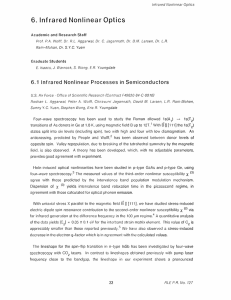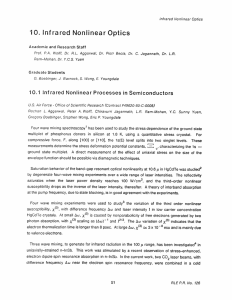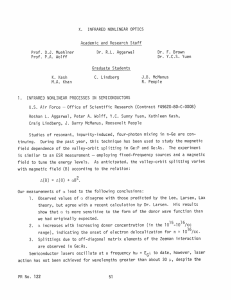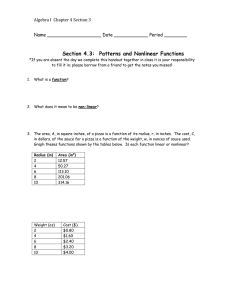IX. INFRARED NONLINEAR OPTICS
advertisement
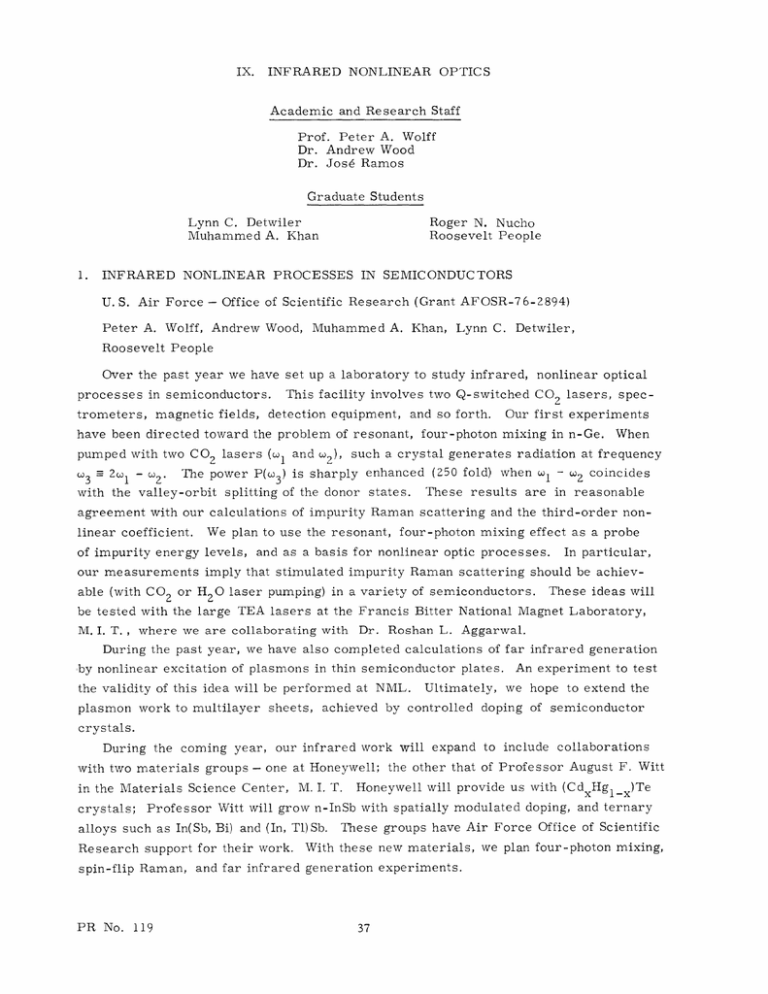
IX. INFRARED NONLINEAR OPTICS Academic and Research Staff Prof. Peter A. Wolff Dr. Andrew Wood Dr. Jose Ramos Graduate Students Lynn C. Detwiler Muhammed A. Khan 1. Roger N. Nucho Roosevelt People INFRARED NONLINEAR PROCESSES IN SEMICONDUCTORS U. S. Air Force - Office of Scientific Research (Grant AFOSR-76-2894) Peter A. Wolff, Andrew Wood, Muhammed A. Khan, Lynn C. Detwiler, Roosevelt People Over the past year we have set up a laboratory to study infrared, nonlinear optical processes in semiconductors. This facility involves two Q-switched CO 2 lasers, spec- trometers, magnetic fields, detection equipment, and so forth. Our first experiments have been directed toward the problem of resonant, four-photon mixing in n-Ge. pumped with two CO C3 = 2 1 -2. 2 lasers (wo and w2 ), When such a crystal generates radiation at frequency The power P(w3) is sharply enhanced (250 fold) when with the valley-orbit splitting of the donor states. el - w2 coincides These results are in reasonable agreement with our calculations of impurity Raman scattering and the third-order nonlinear coefficient. We plan to use the resonant, four-photon mixing effect as a probe of impurity energy levels, and as a basis for nonlinear optic processes. In particular, our measurements imply that stimulated impurity Raman scattering should be achievable (with CO 2 or H20 laser pumping) in a variety of semiconductors. These ideas will be tested with the large TEA lasers at the Francis Bitter National Magnet Laboratory, M. I. T. , where we are collaborating with Dr. Roshan L. Aggarwal. During the past year, we have also completed calculations of far infrared generation by nonlinear excitation of plasmons in thin semiconductor plates. the validity of this idea will be performed at NML. An experiment to test Ultimately, we hope to extend the plasmon work to multilayer sheets, achieved by controlled doping of semiconductor crystals. During the coming year, our infrared work will expand to include collaborations with two materials groups - one at Honeywell; the other that of Professor August F. Witt in the Materials Science Center, crystals; M. I. T. Honeywell will provide us with (CdxHgl_x)Te Professor Witt will grow n-InSb with spatially modulated doping, and ternary alloys such as In(Sb, Bi) and (In, T1)Sb. Research support for their work. These groups have Air Force Office of Scientific With these new materials, we plan four-photon mixing, spin-flip Raman, and far infrared generation experiments. PR No. 119



